Exploring Real World Energy Transformations Transcript
GFX:
Teaching Channel
+++ 00:00:04 +++
Brittany: Pencil, packet, seats. Do it now.
Brittany: Here we truly push our students past limits that they have set for themselves. We operate from a notion of team and family. So my students know that if one fails, we all fail and we're all responsible for each other. We're all responsible for each other's success.
Card:
Creating Success in
Middle School:
Exploring Real World Energy
Transformations
+++ 00:00:32 +++
Brittany: So looking at what we're doing this week, we've already been studying energy transformation, so we're prepared for that. We're building off of what we learned in thermal energy.
Brittany: My name is Brittany Williams. I teach sixth grade science at KIPP Truth Academy in Dallas, Texas.
Brittany: Today you're going to do your first four stations. The stations include looking at the energy transformations of a hairdryer, of a lamp, solar powered calculator and two battery powered fans.
Lower Third:
Brittany Williams
6th Grade Science Teacher
KIPP Truth Academy, Dallas, Texas
+++ 00:01:00 +++
Brittany: Today's lesson, we looked at the different forms of energy and how they coexist in one object. So looking at a hairdryer, when you plug in the hairdryer, you're using electrical energy. Once you cut the hairdryer on, that electrical energy is transformed into mechanical energy. Once the hairdryer is on, it's producing heat. That heat is thermal energy. It's a transformation of energy forms for that one particular object.
+++ 00:01:27 +++
Brittany: Today you're going to do your first four stations, so you're going to be in charge of hopping around from station to station. Please make sure that when you go from one station to another, you take your binder. Take a look at the screen, find your group. We're broken down into four different groups today. Names that are in bold, you are your group lead. All right, you're in your first seasons, you're already set. I'm going to put ten minutes on my clock. Go.
+++ 00:01:55 +++
Student: It's working, it's on.
Student: Thermal.
Student: It didn't go.
Student: Electrical energy, like you know, you have options, options to control it, from water to the plug.
Student: When you put batteries in, it gives energy to the fan and then the fan turns--
Student: Gives us air.
+++ 00:02:20 +++
Brittany: Part of their student packet today, in their student journal, they were given a chart and the chart outlined each of their four stations. So at your first station, could you tell me the energy source? Could you tell me the type and form of that energy source? What were the energy transformations that you observed in that particular station? So if you were looking at the hairdryer, did it start off as chemical? Did it start off as electric? What was the second form of energy? So if they were able to tell me the different steps in that energy transformation, as well as the evidence for how they know that those were the proper steps, then we can determine their rate of success for the stations today.
+++ 00:03:00 +++
Brittany: It starts off as?
Student: Chemicals.
Brittany: Chemicals, chemical energy because of the?
Students: Batteries.
Brittany: Batteries. So it has the potential to do something, right? But unless it's cut on, is it going to do anything?
Students: No.
Brittany: No.
+++ 00:03:13 +++
Brittany: In terms of being prepared for today's lesson, they definitely knew that there were two main types of energy and they knew that there were different forms of energy. However, energy transformations in real life context was something that they grappled with. They know it exists, but they had not in previous grades looked at the different forms in a real life example, which is how we got to today's lesson of being able to do different stations with real life things, things they interact with every day.
+++ 00:03:41 +++
Brittany: All right, ten minutes on the clock for your current new station. Go.
Student: It's off right now.
Brittany: So, okay, and because it's off?
Student: It's back on.
Brittany: Ah, so what controlled that?
Student: The sun.
Student: The light.
Student: Towards the light.
Brittany: Right.
Student: If you move this up, it depends.
Brittany: Right.
Students: Oh.
Brittany: Those lights, I love it.
Student: Mechanical can either be you doing something or the object doing it by itself. But kinetic, it's always moving. Not always moving, but it's moving because of something.
+++ 00:04:19 +++
Student: Mechanical do have .
Student: I know but this
Student: Oh, it's not mechanical.
Student: Like it's cool right here, but then it heats up here.
Student: Yeah.
Brittany: There's four different intimate stations going on and my students are allowed to interact one on one with each other, which we can't do whole group. So working six or seven people in a group, they're really building off of each other, having those deeper conversations that some may be afraid to have whole group.
+++ 00:04:44 +++
Brittany: When you cut that on, cut that on for us La'Marcus.
Student: You can hear sound.
Brittany: You can hear sound.
Students: Oh.
Brittany: If we have questions or if we don't understand, we can raise our hand and say, "Okay, Ms. Williams, I'm lost. I need help."
Brittany: A common question that I'm getting as I'm hopping around to the different groups, we're confused about when it says energy form. There are two main types of energy. What are they?
Students: Kinetic and potential.
Brittany: Kinetic and potential, okay. So we have two main types. Within these two main types, we have several forms, okay? Do we understand?
Students: Yes.
+++ 00:05:20 +++
Brittany: Two main types, several forms. I just wanted to make sure that was clear for the whole group. Go ahead and go back to your stations.
Student: If you just put a battery right there, it still has the chemical energy, but if you plug it into a lamp, that's when it becomes radiant energy and thermal energy.
Student: Energy transformation is from that--
Student: Electrical to light.
Student: Then thermal.
Student: It didn't go. You know it was making sound.
Student: Yeah, I think it's sound.
Student: It's electrical.
+++ 00:05:54 +++
Student: Most of them move, but kinetic is a type of the two forms, but the mechanical is the energy form.
Brittany: My favorite moment in class today was stepping back and not being a part of the groups. To watch them have those conversations and to not rely on me to answer the questions, but for them to really toggle back and forth about, "Okay, no, I disagree with that," and those were the things that I was hearing. Those moments are vital, because that's building the critical thinkers, that's building the new scientists. That's what we need in our educational system to really make a difference.
+++ 00:06:31 +++
Brittany: So before we move on to our exit ticket, let's just do a quick share out. What are some things you noticed at your stations today?
Student: I noticed or shared out is, there was one object at each station that was powered by sort of different type of energies.
Brittany: Okay, what would we call that, the energy?:
Student: Source.
Brittany: Energy source. Great job. Clap, shining Talence on three. One, two, three. Table leave, what are we thinking?
Student: That the lamp, at first I thought it was potential, because it was not going anywhere. The radiant energy is going towards the room, so it's kinetic.
+++ 00:07:14 +++
Brittany: Perfect. Clap, shining Luz on three. One, two, three. Bring it all the way back. All right, so you'll have three minutes. Complete my exit tickets. They are found at the front of every table. Doesn't matter where you're sitting. Exit tickets are silent.
Brittany: When they're in groups, I'm not always immediately able to tell, like Lucia got it, Janae didn't, versus exit tickets, I can clearly see, okay, Lucia thinks that chemical energy is kinetic energy and that's a misconception. That's something I can clarify with her. My calculations were, 88 percent of them knew, and then there were four or five students who were off on more than one.
+++ 00:07:56 +++
Brittany: All right, homework. If you did not complete any parts of the student journal today, for stations one through four, you need to make sure you complete those tonight. They will set you up for success for tomorrow's four labs. I expect exit tickets to be in my hand on your way out of the door. Let's head out.
+++ 00:08:19 +++
Brittany: It's important for my students to walk away from my class knowing that they're responsible for their education and getting what they need, because in life, well beyond KIPP Truth Academy, that will be the case. They'll be responsible for calling their job back and saying, "Okay, I'm sick today." They'll be responsible for telling their professor, "I need an extension on my paper." So I want to make sure I'm building them into the leaders and the productive society members that we'll need in the future now. So
+++ 00:08:47 +++
if they get that practice now and they hear those words now, when they get to that stage in life, that won't be a question. They'll know, I can do this, because it's for me. Brittany: That's right.
Student: Number two is right?
Brittany: Yep. Yep. Shout out to Jamie. Thanks, Ayah.
GFX:
Teaching Channel
#### End of Brittany_Williams_FC.mp4 ####


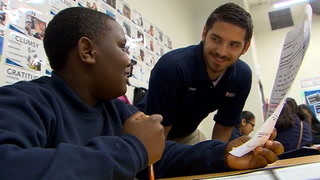
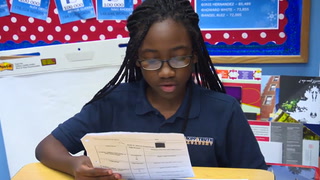
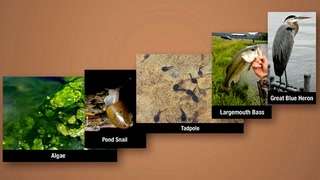
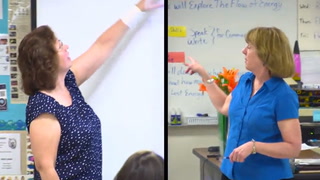


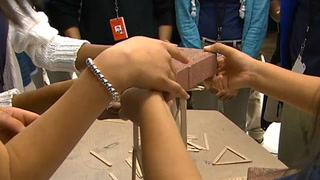
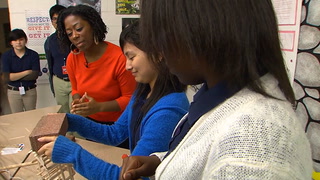


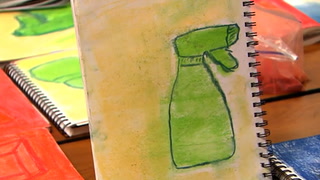
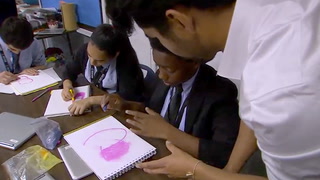
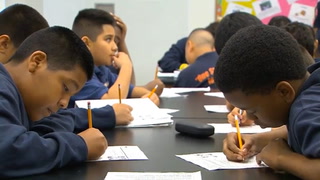
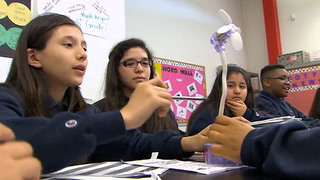









10 Comments
AUDREY Batiste Jul 15, 2020 5:04pm
I enjoyed this lesson and like how Ms. Williams was letting her students think on their own, while in their groups. Training her students to become critical thinkers and available to answer any question. Also, the homework given was preparing them for success for lab the next day.
Henry Childress Dec 26, 2017 12:40pm
Ronald Adams Apr 19, 2017 7:38pm
MyKeida Middleton Jan 5, 2017 12:29am
Tom Jenkins Nov 16, 2016 3:28pm